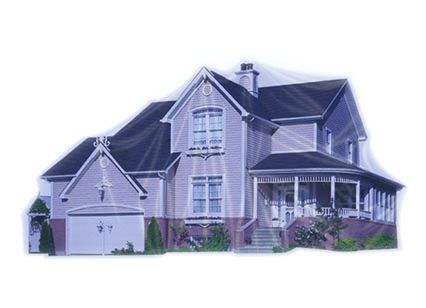Understand ventilation
 It’s a fact: today’s homes are so well insulated that they trap moisture and pollutants inside. Fresh air is missing.
It’s a fact: today’s homes are so well insulated that they trap moisture and pollutants inside. Fresh air is missing.
So, without fresh air, carbon dioxide, odors, dust, airborne pollutants and excess humidity are kept indoors.
What happens? More than half of the houses have visible signs of moisture and develop mold that affect the occupants not to mention all the health problems that result.
Without ventilation, there are no indoor air quality inside the house, no life quality, no comfort and certainly, a deterioration of the structure of the house.
Humidity and pollutants trapped in your home!
Daily activities such as showering or cooking release moisture into the air. Over time, if this moisture cannot be evacuated, its accumulation will cause mold build up, unpleasant odors and costly damages to the house structure often in hidden places.
When discovered, it is already too late.
-
Bedroom
- Dust and mites
- Allergens and carpets
- Hair and animal dander
- Carbon dioxide (CO2)
-
Living room
- Carpets
- Fireplace
- Dust, allergens and mites
- Cigarette smoke
-
Kitchen
- Persistent odors
- Bacteria
- Cooking pollutants
- Household cleaners
-
Basement
- Wood stove
- Combustion unit
- Paints and chemicals
-
Bathroom
- Excessive moisture
- Aerosols and sprays
- Mold spores
- Household cleaners
-
Garage
- Carbone monoxyde (CO)
- Pesticides, herbicides and solvents
- Paints and chemicals
-
Office
- Printers and copiers
- Melamine furniture
-
Attic
- Asbestos
- Insulation
- Fiberglass
- Dust and mites
Ventilation in your home: a key to a healthy home.
Ventilation is a necessity. According to experts, whole-house ventilation and filtration effectively eliminate airborne pollutants and excess moisture, thereby protecting the health of your family and the structure of your home.
A balanced mechanical ventilation system with heat or energy recovery ventilation is an ideal way to meet both National Building Code of Canada and the requirements of many energy efficiency programs such as LEED®, ENERGY STAR® for New Homes, NovoclimatTM, BuiltGreenTM , R2000 and many more.
National Building Code: comply to offer your family a quality of life.
No doubt the current building codes require adequate and sufficient ventilation for new constructions.
The lack of ventilation in new construction is not in accordance with the National Building Code of Canada.
Complying to this code provides your family quality of life and an incomparable comfort.
You can also visit the Frequently Ask Questions section to learn more about the National Building Code of Canada.
Air exchangers offered by vänEE closely match the requirements of the National Building Code of Canada.


